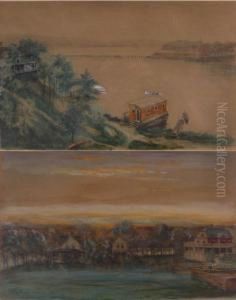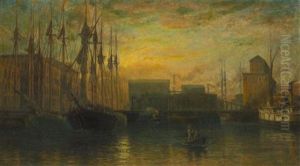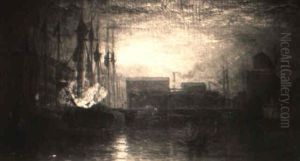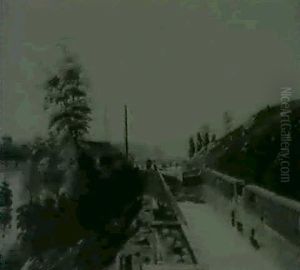J. Frank Waldo Paintings
J. Frank Waldo, born Josiah Franklin Waldo in 1864, was an American artist known for his landscape paintings. His work is characterized by an impressionistic style, with a focus on capturing the atmospheric conditions and the play of light in his scenes. Waldo showed an early interest in art and pursued his passion through his studies and travels.
Waldo's artistic journey began in earnest when he traveled to Europe to study the masters, as was common for American artists of his time. He spent significant time in France, where he was influenced by the French Impressionists, a movement that was at its height during his formative years as an artist. The techniques and philosophy of Impressionism, with its emphasis on light and color over detail, would leave a lasting impact on his work.
Upon returning to the United States, Waldo settled in the Midwest, where he became a prominent figure in the art scene. He often painted en plein air, embracing the practice of painting outdoors to capture the essence of the landscape directly from nature. Waldo's landscapes, which often featured the rural American Midwest, conveyed a sense of tranquility and were marked by a soft, diffused light. He was particularly adept at rendering the atmospheric effects of different times of day and weather conditions.
Throughout his career, J. Frank Waldo exhibited his work in various art galleries and shows, gaining a reputation for his distinct style and his ability to evoke mood in his paintings. Although not as widely recognized as some of his contemporaries, his contributions to American landscape painting were significant, and his works are still appreciated by art collectors and historians.
J. Frank Waldo continued to paint throughout his life until his death in 1940. Today, his paintings can be found in private collections and occasionally appear at art auctions, where they are valued for their historical significance and artistic merit. Waldo's legacy lives on as an example of an American artist who bridged the styles of European Impressionism and American landscape painting, creating a unique body of work that captures the spirit of the American Midwest.



